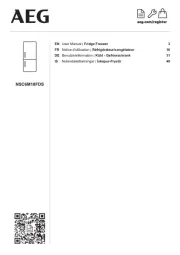AEG AIK2903R Manual
Læs gratis den danske manual til AEG AIK2903R (26 sider) i kategorien Køleskab. Denne vejledning er vurderet som hjælpsom af 48 personer og har en gennemsnitlig bedømmelse på 4.4 stjerner ud af 24.5 anmeldelser.
Har du et spørgsmål om AEG AIK2903R, eller vil du spørge andre brugere om produktet?

Produkt Specifikationer
| Mærke: | AEG |
| Kategori: | Køleskab |
| Model: | AIK2903R |
Har du brug for hjælp?
Hvis du har brug for hjælp til AEG AIK2903R stil et spørgsmål nedenfor, og andre brugere vil svare dig
Køleskab AEG Manualer










Køleskab Manualer
- Steel Cucine
- De Dietrich
- Silva Schneider
- Sauber
- TESLA Electronics
- NEO Tools
- Rommer
- Garmin
- Sommertal
- Gamko
- Irinox
- XO
- Frigidaire
- Arçelik
- EVVO
Nyeste Køleskab Manualer









